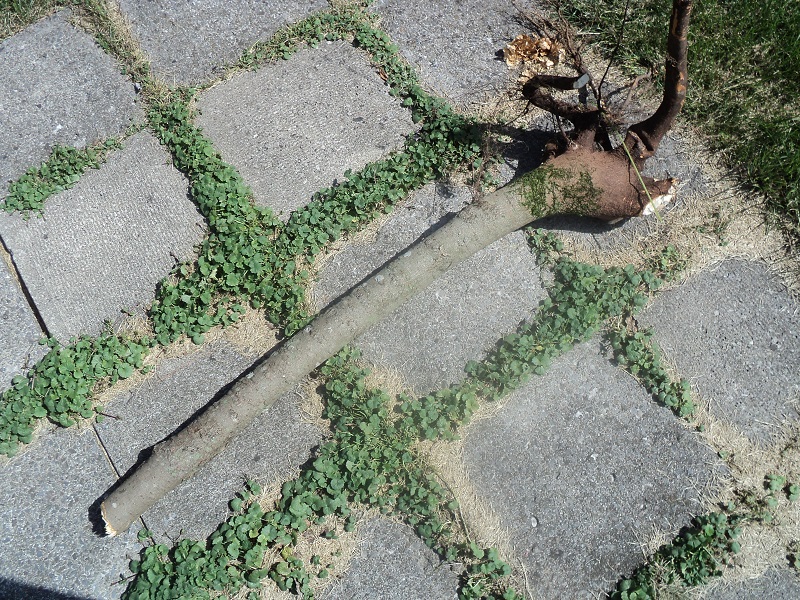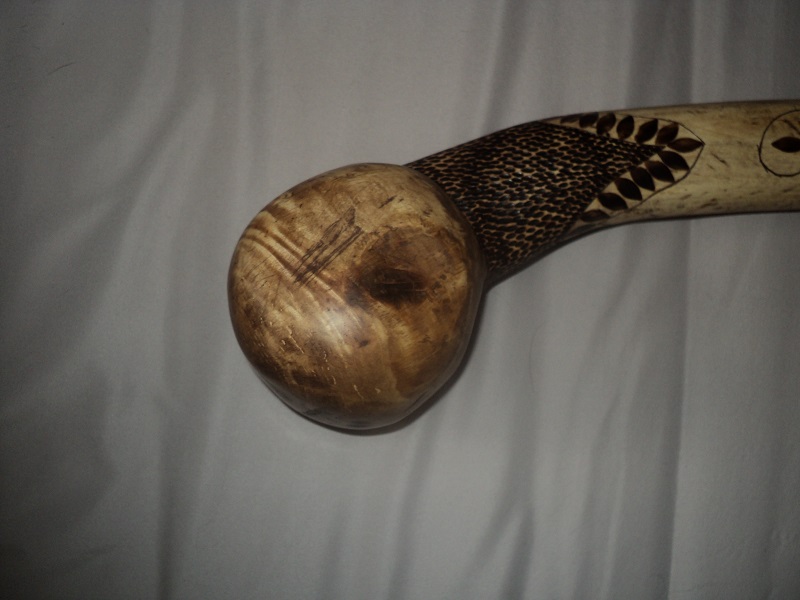Posts: 8,310 Location: Montreal,Quebec,Canada
Fri 20 Jul, 2018 6:48 am
Very good job, looks very attractive and functional. The wood burning decoration is really well done without being overdone.
Since I like to be able to make actual use of something like this I would personally really like a walking stick length version of the same thing, but I can see that at this length it's much more an accurate representation of the length of historical original pieces.
Would make a very good shillelagh or rather a shillelagh " Interpretation " if one uses different woods than the traditional blackthorn
Etienne, if you can find some Lilac branches I've had some good success working with Lilac, and I have a Lilac tree in my backyard that I have to trim off branches once every few years when rogue branches end up touching a bedroom window, so I have my own source of Lilac that isn't a wood harvested as lumber because it grows too small and with often crooked branches that it's not a wood attractive for commercial exploitation.
On the other hand Lilac is about twice as hard as Oak or Ash, but drying it can be tricky because it can almost explode with big cracks at the cut ends unless sealed with wax or vaseline so that the ends dry at the same rate as the rest of a branch with the bark left on it.
One work around if one hasn't the patience to wait a year for the wood to dry is to quickly remove all bark and keep rubbing in boiled linseed oil into the wood and add oil as soon as the wood has soaked in all of the oil.
With a recent project using Lilac I must have rubbed in a total of 12 applications of BLO, each application soaked into the wood like magic inside an hour, I did this every day for about a week. ( Oh, I carved the stick before applying most of the oil but I did rub some oil into the wood after removing the bark and doing some initial rough carving, the first few applications of oil was to protect the wood from drying over night before I continued refining the carving and sanding ).
After carving a walking stick from that branch, and sanding and burnishing the wood with a hard piece of steel I gave the wood a " SUPER GLUE " finish that is water proof, sealing in the oil and the moisture already in the Lilac .... so far I haven't seen any cracking or checking on the wood. ( Crossed fingers, waiting a year for the wood to dry is still a better idea ).
A good source of information about woods:
http://www.wood-database.com/
Lilac:
http://www.wood-database.com/lilac/
For comparison Hard Maple:
http://www.wood-database.com/hard-maple/


